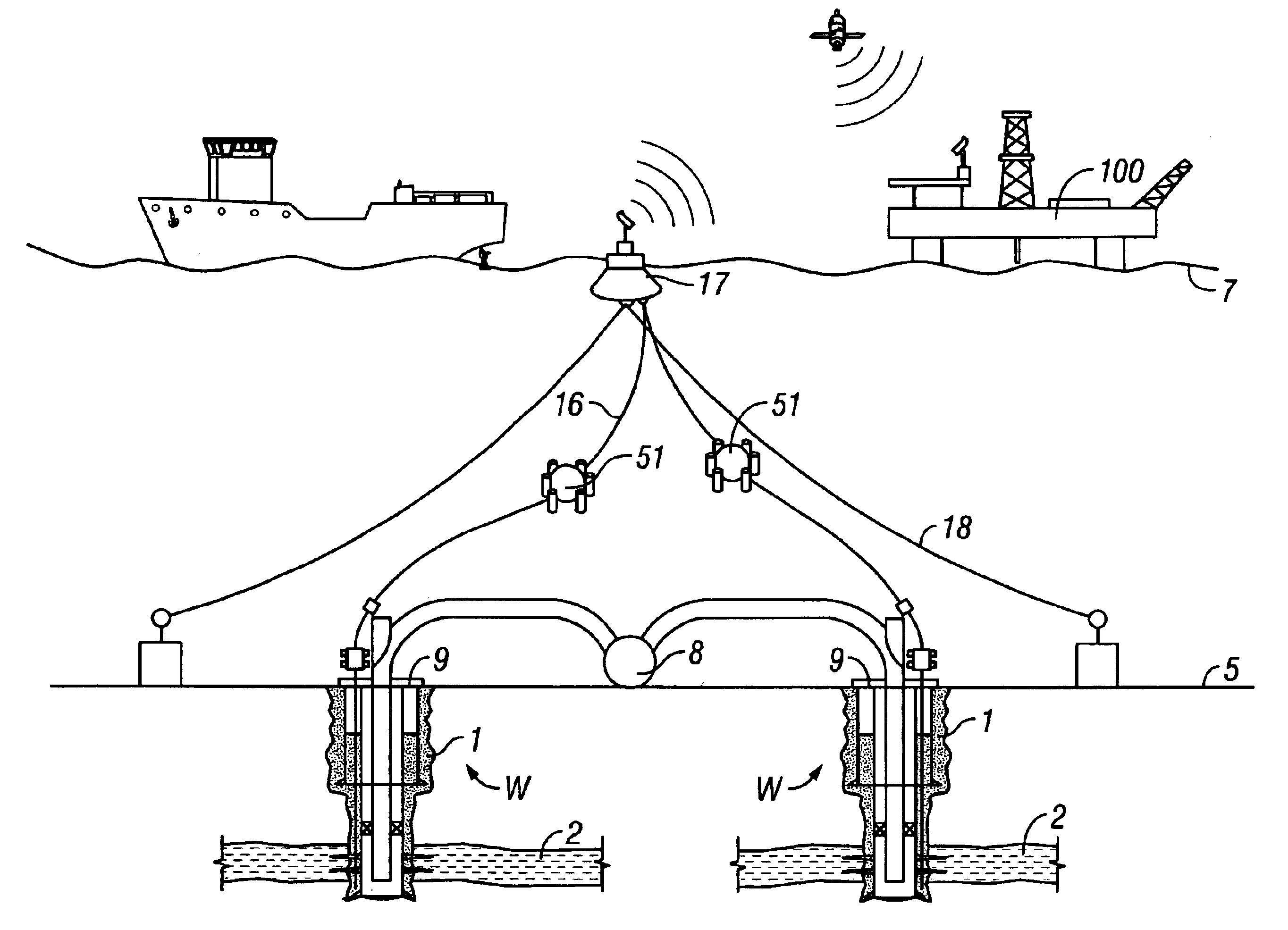Method and apparatus to monitor, control and log subsea oil and gas wells
a technology for monitoring, controlling and logging subsea wells, applied in the direction of survey, instrumentation, borehole/well accessories, etc., can solve the problems of difficult to log or access subsea wells, high drilling cost, and inconvenient operation
- Summary
- Abstract
- Description
- Claims
- Application Information
AI Technical Summary
Benefits of technology
Problems solved by technology
Method used
Image
Examples
Embodiment Construction
The Alternative Path Conduit
[0028]Referring now to FIG. 1 of the drawings, a plurality of wells W are shown located on the sea floor 5. The well is drilled from the surface of the sea 7 using a semi-submersible 100 or drillship drilling rig (not shown). One or more wells W are bored by the action of rotating a drill bit on the end of a drill pipe from the surface rig where the drill bit is inserted inside of risers pipes and the drill cuttings are flushed out of the well bore with a drilling fluid using method and apparatus well known to those in the oil and gas industry.
[0029]As more clearly shown in FIG. 2, a subsea well is constructed by drilling a borehole 1 down into the earth to intersect subterranean fluid production intervals 2 located in the earth. The well is constructed with at least one diameter of casing 3 disposed into the annulus of the borehole 1 and grouted into place from the surface rig, using cement 4 placed between the annular space formed between the bore hole ...
PUM
 Login to View More
Login to View More Abstract
Description
Claims
Application Information
 Login to View More
Login to View More - R&D
- Intellectual Property
- Life Sciences
- Materials
- Tech Scout
- Unparalleled Data Quality
- Higher Quality Content
- 60% Fewer Hallucinations
Browse by: Latest US Patents, China's latest patents, Technical Efficacy Thesaurus, Application Domain, Technology Topic, Popular Technical Reports.
© 2025 PatSnap. All rights reserved.Legal|Privacy policy|Modern Slavery Act Transparency Statement|Sitemap|About US| Contact US: help@patsnap.com



